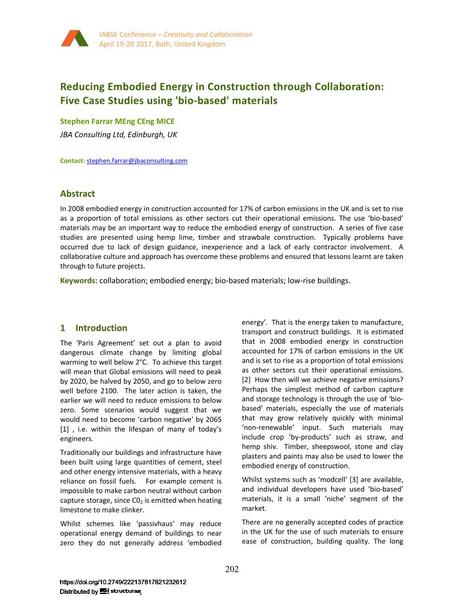Reducing Embodied Energy in Construction through Collaboration: Five Case Studies using 'bio-based' materials

|
|
|||||||||||
Détails bibliographiques
| Auteur(s): |
Stephen Farrar
|
||||
|---|---|---|---|---|---|
| Médium: | papier de conférence | ||||
| Langue(s): | anglais | ||||
| Conférence: | IABSE Conference: Creativity and Collaboration – Instilling Imagination and Innovation in Structural Design, Bath, United Kingdom, 19-20 April 2017 | ||||
| Publié dans: | IABSE Conference Bath, April 19-20, 2017 | ||||
|
|||||
| Page(s): | 202-209 | ||||
| Nombre total de pages (du PDF): | 8 | ||||
| Année: | 2017 | ||||
| DOI: | 10.2749/222137817821232612 | ||||
| Abstrait: |
In 2008 embodied energy in construction accounted for 17% of carbon emissions in the UK and is set to rise as a proportion of total emissions as other sectors cut their operational emissions. The use ‘bio-based’ materials may be an important way to reduce the embodied energy of construction. A series of five case studies are presented using hemp lime, timber and strawbale construction. Typically problems have occurred due to lack of design guidance, inexperience and a lack of early contractor involvement. A collaborative culture and approach has overcome these problems and ensured that lessons learnt are taken through to future projects. |
||||
